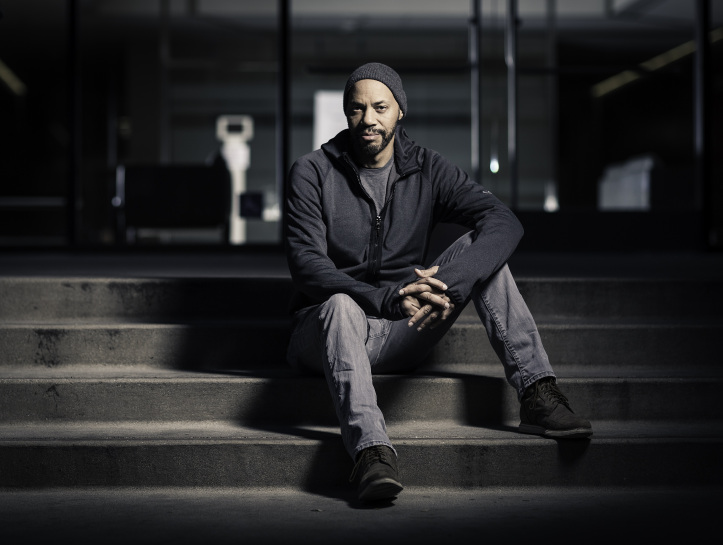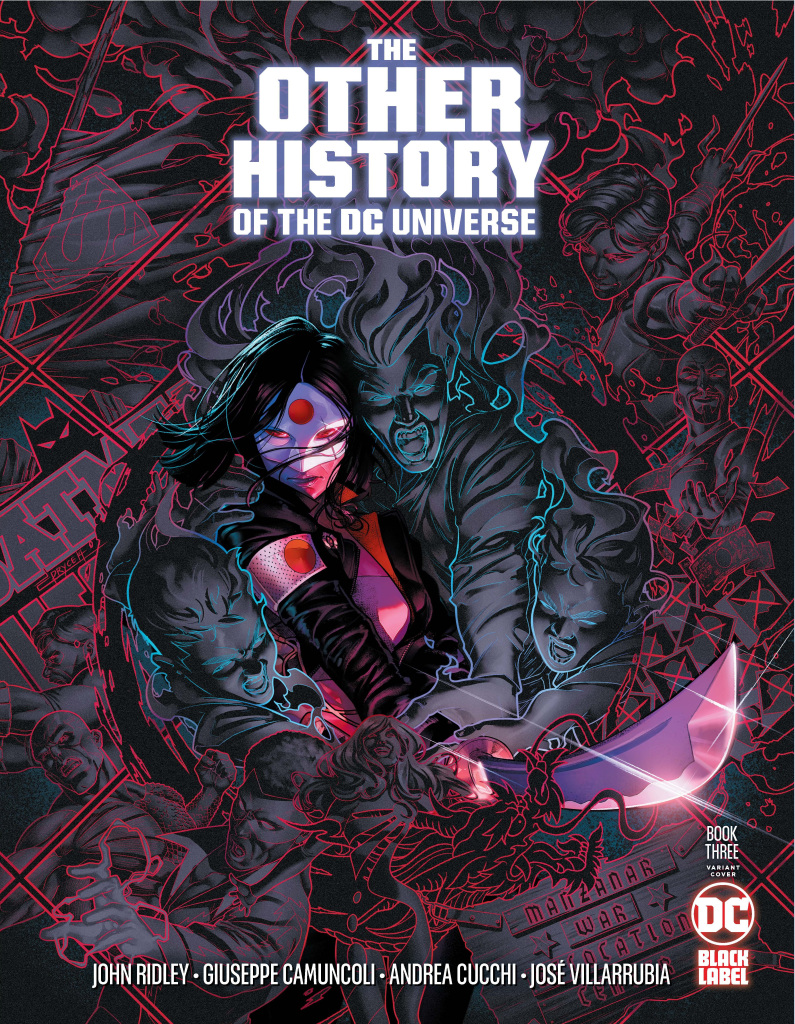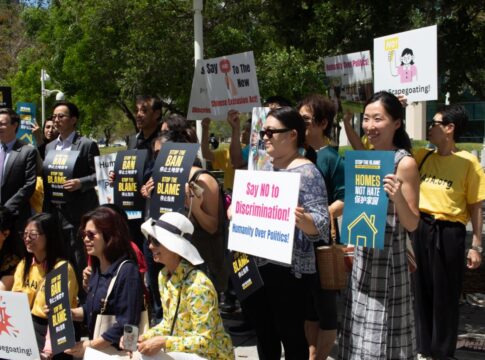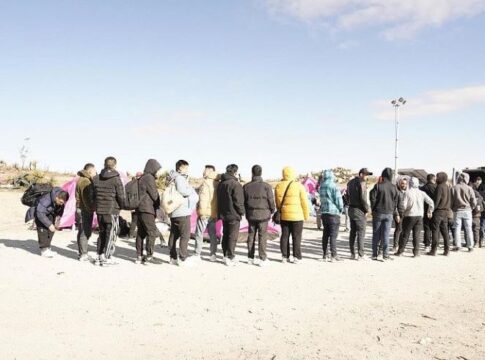By Jana Monji, AsAmNews Arts & Culture Writer
A casual incident during a north Wisconsin summer camp helped prepare John Ridley for The Other History of the DC Universe #3. This issue, on sale as of March 30, 2021, is about Tatsu Yamashiro, the heroine known as Katana, who fights against xenophobia and oppression.
This is a contemporary story, beginning in 1983. Tatsu’s husband, children and home are taken from her due to a familial dispute and Tatsu must find her way to heal her grief and be reborn as a powerful crusader. It’s a year after the murder of Vincent Chin in Highland Park, Michigan.
The Milwaukee-born Ridley, who is Black, distinctly remembers those times. That was long before he won an Academy Award for Best Adapted Screenplay for the 2013 12 Years a Slave and created and served as showrunner for the Emmy Award-winning anthology series American Crime (He also directed five episodes and wrote eight). During the 1980s, he was a student at New York University Gallatin School of Individualized Study where he studied East Asian Languages and Cultures, focusing on Japanese.
His interest in Japan had nothing to do with a book or a television miniseries like the 1975 James Clavell novel “Shōgun” or the 1980 Richard Chamberlain miniseries.
LATEST STORIES
Instead, he said that during one of his summers in Wisconsin, a fellow camper was a Japanese national who spoke little English. “I’m not sure why his parents sent him there. It was hard enough being from a different place,” Ridley admits. “There were days when he had real problems and clearly felt alone and lonely.”
Ridley distinctly remembers witnessing the Japanese camper calling his parents from the only phone the attendees could use. “He was really upset and trying to call his parents. He was not enjoying himself. I remember feeling bad that I could not communicate with this young man. I could not try to be a friend as any decent person could have done.”
That moment stuck with Ridley. During a phone interview with AsAmNews he mused, that if the camper had been from a non-English speaking European country, “maybe that would have stuck with me and I would have studied a different language.”
As an adult in New York, Ridley and some of his friends were considering going into foreign service. In the late eighties, “People were just so afraid of Japan, afraid of Japanese people, afraid the Japanese would take over America.” That and his summer memory guided Ridley toward studying Japanese.
During his time in college, Ridley wasn’t ignoring films. He was exposed to the films of Akira Kurosawa (1910-1998), Yasujirō Ozu (1903-1963), Kenji Mizoguchi (1898-1956) and more. It was about the time that Ran came out (1985).

Ridley says his favorite film on Japan is Paul Schrader’s Mishima: A Life in Four Chapters. The 1985 biographical drama uses segments of the works of the controversial writer Yukio Mishima (played by Ken Ogata in the film) and interweaves it with Mishima’s life story. Schrader also directed the 1980 Richard Gere-Lauren Hutton film American Gigolo. Schrader had already written Taxi Driver and co-written with his brother Leonard, the 1974 The Yakuza before co-writing Mishima with his brother.
Yukio Mishima was an author, poet, playwright and fervent nationalist. He led a group on to a Tokyo military base in a failed coup attempt to overthrow Japan’s 1947 Constitution.
His ritual suicide, which was long after the end of the American Occupation (1945-1947), showed just how hard the traditional seppuku could be. Mishima was 45 at the time of his death in 1970.
It’s hardly surprising then that Mishima is Ridley’s favorite author, with the 1956 The Temple of the Golden Pavilion (金閣寺) and the 1965-1971 The Sea of Fertility tetralogy (豊饒の海)of particular interest.
Masaki Kobayashi’s The Human Condition trilogy (人間の條件) which is based on Junpei Gomikawa’s six-volume novel are Ridley’s favorite Japanese films. One of the longest narratives films, The Human Condition is nine-hours and 39-minutes long without intermission and is comprised of the 1959 No Greater Love, and the 1959 Road to Eternity and the 1961 A Soldier’s Prayer.
The trilogy follows the tragic fate of Kaji. After attempting to protect Chinese prisoners, Japanese-occupied Manchuria results in him being sent away into military service where he witnesses bullying and torture of fellow soldiers. In order to survive, Kaji ends up killing a fellow Japanese soldier at the end of the second film. In the last film, Kaji becomes a Soviet prisoner of war and although he escapes and prays to be re-united with his wife, he dies from hypothermia.
After Ridley graduated from college, he worked and saved up enough money to take a four-month backpacking trip to Japan. “The world was much bigger then. You couldn’t just jump on the internet and see what Japan was like.”
Staying at traditional Japanese inns (ryokan), he started in Tokyo and worked his way down to Yamaguchi.
“The Japanese people are very friendly. Back then, they really appreciated that I could speak a little bit of Japanese because it seemed like I had gone to an effort.” And Ridley had many conversations. “They were interested in America: Why America was afraid of Japan.” Ridley had friends who were studying for foreign service and met others while he was there.
Two years ago, Ridley made the trip again. This time with his wife, Gayle, who is biracial (part Japanese) and their two kids. “My kids are part Japanese. They speak a little. I speak a little. My wife speaks none.” Of course, some people tried to speak Japanese to her instead of him.
All of these things will help him in interpreting the story of Katana. Ridley feels that as a Black man, he can understand the otherization. While he believes that the original character was well rendered, his interpretation of this character will be “more specific than perhaps she has been rendered before.”
From his college days, he remembers clearly how one of his Asian American teachers spoke about Vincent Chin. “It was one of the most specific lessons I remember.” His professor was passionate about Chin and the impact on Asian Americans. Of the two men who killed Chin, Ridley noted, “They weren’t even smart enough to delineate Asia. They didn’t even know the difference between Japanese American, Chinese American and Korean American. It compounded the stupidity.”

Decades later, with the current rise of anti-Asian sentiment in the US due to COVID-19, Ridley realizes that Katana and the topic of anti-Asian xenophobia is very timely, but he insisted, “It is only timely because the prevailing culture is realizing the racism and discrimination toward Asian Americans. It only surprises me when other people are surprised that it happens.” Yet he opined that this was going to happen “when you have people at the highest level saying it’s okay to hate, it’s okay to blame.”
Ridley looks forward to a time, when racism toward Black people and Asian Americans and others will not be so topical and rather something we all can look back at and be glad we’ve worked past those problems. If you’ve been looking forward to a strong Asian female superhero or another Asian woman to cosplay, The Other History of the DC Universe #3 is out. Rated mature, the 48-page issue is $6.99 and illustrated by Giuseppe Camuncoli. To purchase, visit DC Comics.
AsAmNews has Asian America in its heart. We’re an all-volunteer effort of dedicated staff and interns. Check out our new Instagram account. Go to our Twitter feed and Facebook page for more content. Please consider interning, joining our staff, or submitting a story or making a contribution.









